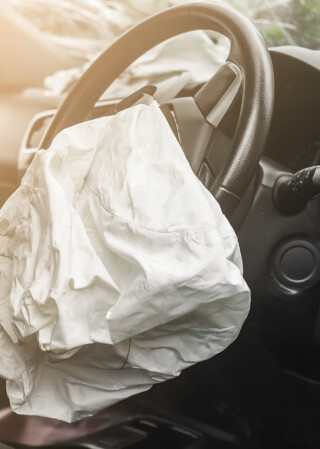In this recent case, the High Court needed to determine what would have appeared to be a simple issue, who was driving a particular motor vehicle at the time of an accident.
The Plaintiff, 17-year-old Lien-Yang Lee, was on North Stradbroke Island with this father, mother and two younger brothers, travelling in a Toyota Tarago. Whilst driving, the driver of the Toyota veered onto the wrong side of the road and collided head-on with a Nissan Patrol. The Court herd that within 30 to 90 seconds, the driver of the Nissan arrived at the Toyota and found the father of Lien-Yang, standing between the driver’s seat and the second row of seats. The mother was in the front passenger seat and the three brothers (including Lien-Yang) were seated in the second row of seats. As a result of the collision, Lien-Yang sustained significant spinal injuries and was rendered a partial quadriplegic.
Whilst it may have appeared obvious that the father had been driving, as Lien-Yang was discovered in the back seat with his brothers, an investigation launched by the insurer discovered that Lien-Yang’s blood was found on the driver’s side airbag. Based on this finding, the insurer concluded that Lien-Yang had in fact been driving the vehicle and caused the collision, and that his father was sitting in the back seat at the time of the accident. The insurer’s theory was that as Lien-Yang was unlicensed, his father had lowered the driver’s seat from where he was sitting after the accident and dragged his son onto the back row of seats to “protect” him from any legal ramifications. Due to its view that Lien-Yang had been driver, the insurer deemed that he was wholly responsible for his own injuries and denied liability.
Lien-Yang initiated proceedings in negligence in the Supreme Court of Queensland. Lien-Yang’s father was the named Defendant, as his father was the insured person. Lien-Yang and his mother gave evidence in Court, stating that the father was driving the Toyota, and that he had veered onto the wrong side of the road and caused the accident. The Court rejected the evidence of both Lien-Yang and his mother, expressing concerns about their credibility, and dismissed the claim.
Lien-Yang appealed this decision. The appeal judge identified several critical errors in the trial judge’s findings. The appeal judge noted that it would have been almost impossible for the father to have pulled his severely injured son from the driver’s seat to the back seat, in the short time before the driver of the Nissan arrived (which was, at most, 90 seconds after the collision). Nonetheless, the appeal judge found that the DNA evidence on the driver’s airbag substantially weakened Lien-Yang’s case and that the trial judge’s decision was not “glaringly improbable” or “contrary to compelling inferences”. Consequently, Lien-Yang’s appeal was dismissed.
Lien-Yang appealed to the High Court on two grounds. The first ground was that the Court of Appeal had failed to engage with his argument and placed too much importance on the blood evidence. The second ground of appeal was that finding Lien-Yang as the driver was contrary to many compelling aspects of the case.
The High Court agreed that the fact that Lien-Yang was found in the back seat of the Toyota within 90 seconds of the collision was powerful evidence, which favoured making a conclusion that he was not the driver.
The Court also found that the father was extremely cooperative at the scene of the accident and admitted to being the driver at the scene. As such, there was little to no reason to doubt the father’s credibility and his assertion that he was the driver at fault. In relation to how Lien-Yang’s blood came to be on the driver’s airbag, it had been argued that at some point, his father must have touched him and then touched the airbag. The Court found that this hypothesis was much more probable than the insurer’s argument that Lien-Yang was driving and was then dragged into the back seat by his father.
In summary, the High Court found that the Court of Appeal failed to weigh up all of the evidence in deciding which hypothesis was more probable. The trial and appeal judges failed to properly consider Lien-Yang’s argument and placed too much weight on the presence of the DNA evidence. As such, the High Court overturned the previous findings, awarding Lien-Yang $3.35 million and ordering the insurer to pay his legal costs.


